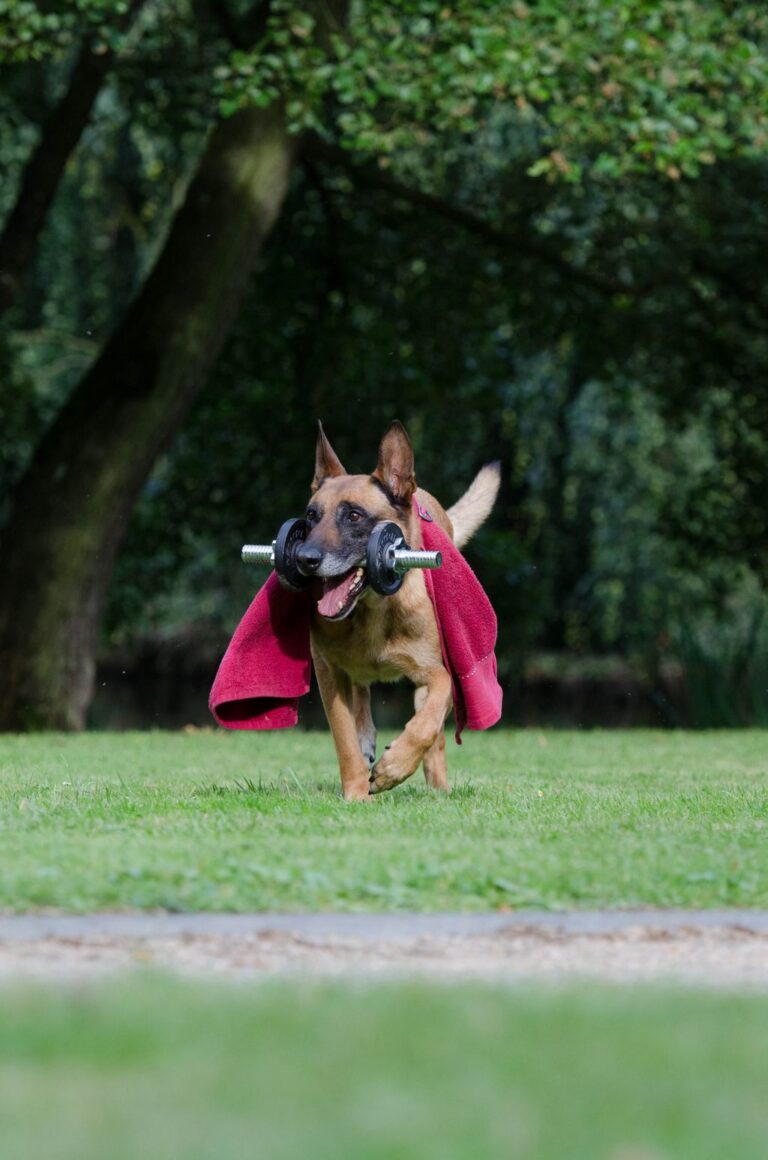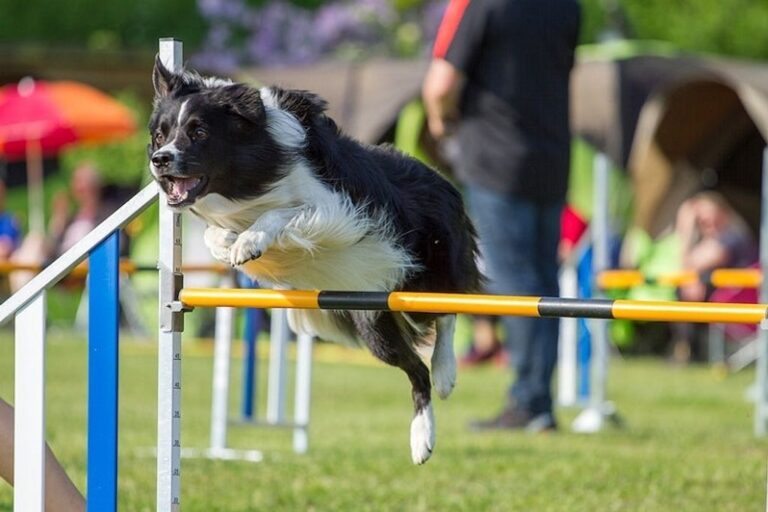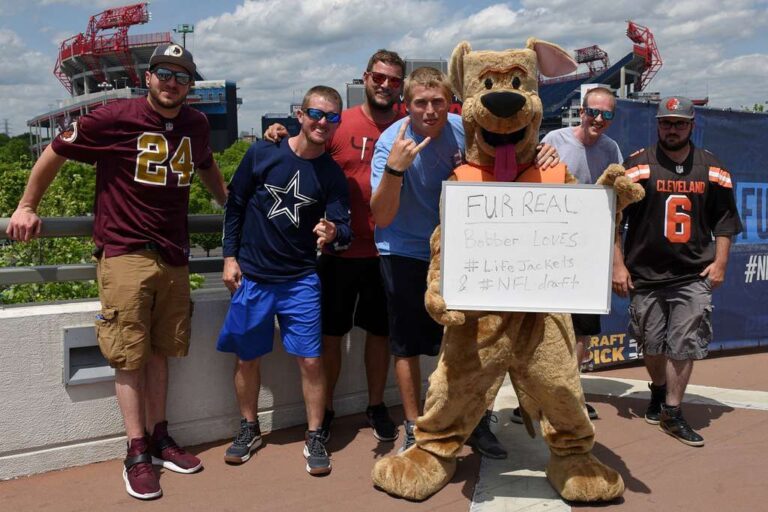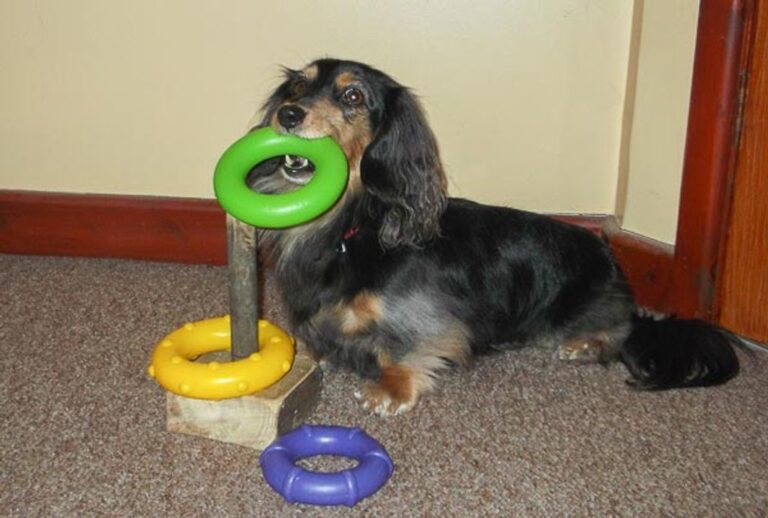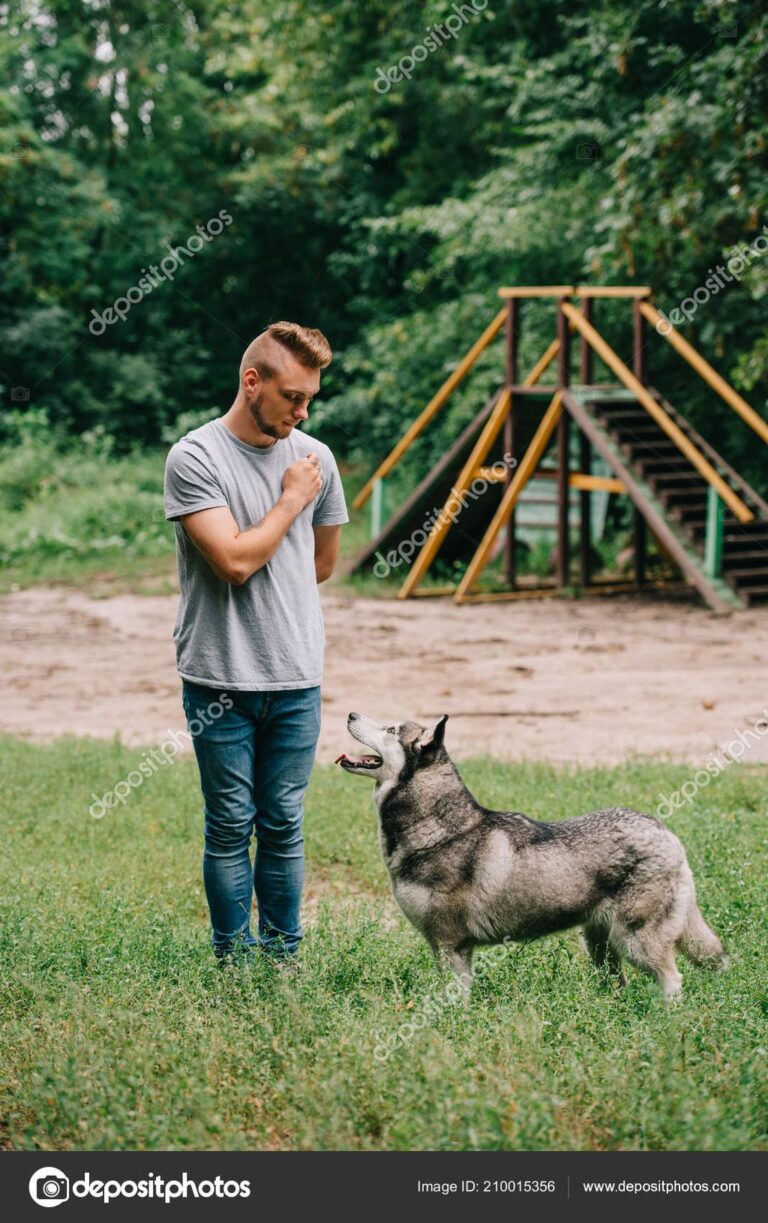Putting an end to the Jumping: How to Stop a Dog from Jumping
Jumping is a common behavior problem in dogs that can be frustrating for both owners and guests. However, with the right techniques and consistent training, it is possible to put an end to this behavior. In this article, we will explore the reasons why dogs jump and provide practical tips on how to stop them from jumping. By setting clear boundaries, teaching alternative greetings, and managing jumping situations, you can create a well-behaved and polite dog.
Key Takeaways
- Understanding the reasons why dogs jump, such as excitement, seeking attention, greeting behavior, and dominance display.
- Setting clear boundaries through consistent training, establishing rules, using positive reinforcement, and redirecting behavior.
- Teaching alternative greetings by teaching the sit command, encouraging calm behavior, and rewarding polite greetings.
- Managing jumping situations by using leashes and harnesses, creating safe spaces, avoiding triggers, and seeking professional help if needed.
Understanding Why Dogs Jump

The Excitement Factor
When it comes to people, all the enthusiasm fades away in excited greeters as the presence of people is no longer as salient as it previously was. Your dog’s senses will eventually tire after seeing many people; this allows him to practice and rehearse calm behaviors. Excessively excited behavior may result in a lack of impulse control. This leads to dogs who will pull more and more and engage in rowdy behavior. Soon, on top of pulling to greet people, the dog may start whining, barking, and pulling with more force, making it more and more difficult to keep him under control. On top of that, consider that too much excitement can backfire and transform into aggressive behaviors (yes, this really can happen!) driven by frustration and lack of control. It may lead to unpleasant encounters as not everybody loves dogs, and those who like dogs do not necessarily like to be greeted enthusiastically by a dog they do not know. Your dog’s rowdy greeting may scare people who are not sure about your dog’s intent. Even if you scream, “he’s friendly!” there are folks who are frightened by dogs.Children can get scratches, expensive clothing can become stained, and the elderly may fall as they lose their balance. It’s important to manage your dog’s excitement and teach alternative greetings to ensure a positive and safe interaction with others.
Seeking Attention
If your dog wants to meet every person he encounters on walks, you may want to divert his attention from the person to you. This may sound easier said than done, especially in dogs who have rehearsed the pulling-toward-people behavior for quite some time. However, if you take baby steps and practice for several outings, you will start seeing results pretty soon. Here is a step-by-step guide on how you can train the attention game.
- Train the Attention Game: Make sure you arm yourself with tasty treats. Incrementally increase the value of the treats based on the level of distractions. Start at home with plain kibble, then use regular treats in the yard, and switch to high-value treats like liver or roasted chicken on walks with people around.
- Enlist the help of some volunteers: Ask them to walk past your dog and totally ignore him while you work on playing the attention game. Gradually increase the distance between your dog and the person to build up progress.
Remember, patience and consistency are key when training your dog to seek attention from you instead of strangers.
Greeting Behavior
When it comes to greeting behavior, it’s important to address the issue of jumping. Jumping up on people may seem like a friendly gesture, but it can be annoying and even dangerous. We understand that you may not mind when your dog jumps up to greet you, but it’s essential to consider how this behavior can affect others. To break this habit, we recommend refusing to give your dog attention until all four feet are on the floor. During training, praise your dog for calm and polite greetings. Traveling with dogs can also be a challenge if they have a tendency to jump on strangers. It’s important to teach your dog alternative greetings, such as targeting people’s hands. This can help redirect their rowdy behavior and ensure a more pleasant interaction for everyone involved.
Dominance Display
When your dog displays dominant behavior, such as growling or aggression, nudging, pawing, standing over another dog, or taking things away from the other dog, it’s important to address the situation. One way to handle this is by physically blocking your dog from returning to the target. Stay calm as you step in front of your dog and consider leaning forward or gently knocking your dog with your hip or knee to send a message. The goal is not to hurt your dog, but to snap it out of its fixation and assert your command. Remember, it’s crucial to set clear boundaries and establish yourself as the leader.
Setting Clear Boundaries

Consistent Training
Consistent training is key to stopping a dog from jumping. It’s a numbers game, so you need to practice often to see results. By practicing a few times a day every day, you’ll start to see improvements. Remember, it’s better to have shorter, more frequent practice sessions than trying to cram everything into one session. And don’t forget to reinforce good behavior with rewards. Training takes time and effort, so be patient and consistent. You got this!
Establishing Rules
When it comes to establishing rules, we believe in setting clear boundaries for our dogs. It’s important to communicate what is acceptable behavior and what is not. Consistency is key in our approach. We make sure to enforce the rules every time, so our dogs understand what is expected of them. This helps them feel secure and know their place in the pack. By using positive reinforcement, we reward good behavior and redirect unwanted behavior. It’s all about teaching our dogs the right way to behave and creating a harmonious environment for everyone involved.
Using Positive Reinforcement
When it comes to training our dogs, positive reinforcement is key. This means rewarding our dogs for good behavior rather than punishing them for bad behavior. By using treats or toys as rewards, we can encourage our dogs to repeat the desired behavior. For example, if our dog sits when we ask them to, we can give them a treat as a reward. This helps them associate sitting with something positive and increases the likelihood that they will sit in the future.
It’s important to note that positive reinforcement should be used consistently and immediately after the desired behavior. This helps our dogs make the connection between their actions and the reward. If there is too much time between the behavior and the reward, our dogs may not understand why they are being rewarded. So, remember to praise and reward your dog right away when they do something good!
In addition to treats and toys, we can also use verbal praise and petting as forms of positive reinforcement. Dogs love attention and affection from their owners, so giving them verbal praise and a pat on the head can be just as rewarding as a treat. This helps strengthen the bond between us and our dogs and makes training a positive and enjoyable experience.
Tip: When using positive reinforcement, it’s important to be consistent and clear with our expectations. Make sure to use the same command or cue every time you want your dog to perform a behavior, and reward them immediately when they do it. This helps our dogs understand what is expected of them and reinforces the desired behavior.
Redirecting Behavior
After you get your dog to stop its initial humping, redirect that energy into an acceptable behavior, like playing fetch or other games or activities. Aside from toys, you could also distract and redirect your dog by giving him or her an interactive toy that dispenses treats or by asking your dog to perform a previously learned trick. You may also be able to train your dog to hump a pillow instead of people or other dogs.
Teaching Alternative Greetings

Teaching Sit Command
Teaching the sit command is an essential part of dog training. It is one of the basic commands that every dog owner should teach their furry friend. The sit command helps to establish control and discipline, and it is also a great way to manage your dog’s behavior in various situations. Here are some tips for teaching your dog to sit:
- Start by holding a treat close to your dog’s nose and slowly move it upwards.
- As your dog follows the treat with their nose, their bottom will naturally lower to the ground.
- Once your dog is in a sitting position, say the word sit and give them the treat as a reward.
- Repeat this process several times, gradually reducing the use of treats and relying more on verbal cues.
Remember, consistency and positive reinforcement are key when teaching your dog the sit command. With practice and patience, your dog will learn to sit on command and become a well-behaved companion.
Encouraging Calm Behavior
To encourage calm behavior in your dog, it’s important to understand their triggers and manage their environment accordingly. For example, if petting and grooming are triggers for your dog, limit the time spent on these activities to a level that your dog can tolerate. Similarly, if visitors trigger your dog’s excitement, consider keeping them in a separate room until the initial energy and excitement of the visit calms down. Once both your dog and the visitors are calm, you can let them interact.
One technique to teach your dog an alternate behavior to jumping is to train them to target people’s hands. This means having the person lower their hand and allowing your dog’s nose to touch it. This serves as a polite greeting and helps redirect their rowdy behavior. Here’s a brief guide on how to train this:
- Have a helper come into your home and sit on the couch without letting your dog meet them yet.
- Instruct your helper to hold a smelly treat in one hand and keep the other hand empty.
- Release your dog and instruct your helper to ignore any rowdy behaviors and wait for the dog to calm down.
Remember, consistency and positive reinforcement are key in encouraging calm behavior in your dog. By understanding their triggers and providing appropriate alternatives, you can help them overcome their jumping habits and create a more peaceful environment for everyone involved.
Rewarding Polite Greetings
When it comes to teaching our dogs more polite greetings, there are a few strategies that have proven to be effective. One approach is to train our dogs to target people’s hands. This means having the person lower their hand and allowing our dog’s nose to touch it. By teaching this alternate behavior, we can redirect our dog’s rowdy tendencies when they run up to greet people. Here’s a simple guide on how to train this:
- Have a helper come into your home and sit on the couch without letting your dog meet them yet.
- Instruct your helper to handle a smelly treat and keep it in their other hand.
- Let your dog out and ask your helper to ignore any rowdy behaviors, waiting for your dog to calm down.
By practicing this exercise, we can help our dogs learn to approach people in a more polite manner. It’s important to be patient and consistent in our training efforts, as it may take time for our dogs to fully grasp this concept.
Managing Jumping Situations

Using Leashes and Harnesses
When it comes to walking your dog, using the right gear can make all the difference. Forget about the regular buckle collar or choke collar, they just don’t cut it. We’ve found that a no-pull harness, also known as a front attachment harness, is the way to go. This type of harness has a ring strategically positioned in the middle of the dog’s chest where the leash attaches. It gives us more control and steering power, especially when dealing with large and powerful dogs. Trust us, it’s a game-changer!
Creating Safe Spaces
When it comes to managing jumping situations, creating safe spaces for your dog is crucial. Off-leash dog parks can be a great option for providing a controlled environment where your dog can socialize and play without the risk of jumping on people. However, it’s important to remember that being off-leash is a privilege that should only be granted to dogs who have good impulse control and can respond to voice commands. If your dog is not yet at that level of training, it’s best to keep them leashed to prevent any accidents or unwanted interactions. Safety should always be the top priority when it comes to managing jumping behavior.
Avoiding Triggers
When it comes to stopping a dog from jumping, it’s important to identify and avoid triggers that can set off this behavior. Triggers can vary from dog to dog, but common ones include excitement, attention-seeking, and greeting behavior. By recognizing these triggers, we can take proactive steps to prevent jumping episodes. Here are some strategies to help avoid triggers:
- Create a calm environment: Keep the dog in a quiet and controlled space to minimize excitement.
- Use positive reinforcement: Reward calm behavior and discourage jumping with treats and praise.
- Redirect attention: Engage the dog in alternative activities, such as playing with toys or practicing commands.
Remember, consistency is key in avoiding triggers and teaching the dog appropriate behavior. By implementing these strategies, we can create a peaceful and well-behaved dog.
Seeking Professional Help
If you cannot find a certified behaviorist in your area, look for a certified professional dog trainer. Just make sure that the dog trainer has experience dealing with aggression and mounting. If your dog sinks their claws into the skin of a human it mounts, or growls when you try to remove it, this is a more serious problem and should be addressed by a certified applied animal behaviorist. It’s important to seek professional help when dealing with challenging behaviors like jumping. A certified behaviorist or professional dog trainer can provide expert guidance and support to help you address the underlying causes of your dog’s jumping behavior. They can assess your dog’s specific needs and develop a customized training plan to modify their behavior. Remember, every dog is unique, and what works for one may not work for another. So, it’s crucial to seek personalized advice from a qualified professional.
In Conclusion
Stopping a dog from jumping can be a challenge, but with the right techniques and consistency, it is possible to put an end to this behavior. By removing jumping aids, adding physical barriers, and implementing training strategies, you can teach your dog to stay grounded. Remember to be patient and reward your dog for good behavior. With time and effort, you can enjoy a well-behaved and polite pup who no longer jumps on guests or tries to escape. So, let’s get started and say goodbye to the jumping once and for all!
Frequently Asked Questions
Why do dogs jump?
Dogs may jump out of excitement, to seek attention, as a greeting behavior, or as a dominance display.
How can I stop my dog from jumping?
You can stop your dog from jumping by setting clear boundaries, consistent training, establishing rules, using positive reinforcement, and redirecting their behavior.
How can I teach my dog alternative greetings?
You can teach your dog alternative greetings by teaching them the sit command, encouraging calm behavior, and rewarding polite greetings.
How can I manage jumping situations?
You can manage jumping situations by using leashes and harnesses, creating safe spaces, avoiding triggers, and seeking professional help if needed.
Can a dog jump a six-foot fence?
Yes, some dogs, particularly athletic breeds like border collies, are capable of jumping surprisingly high fences.
How can I get my dog to stop jumping the fence?
A training plan and a physical barrier, such as a fence, can help prevent dogs from jumping. Consistent training and removing any jumping aids in the yard can also be effective.

